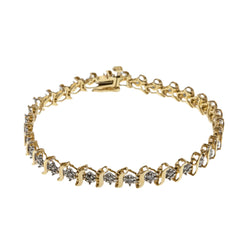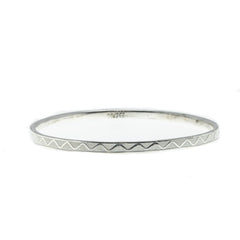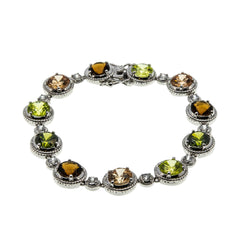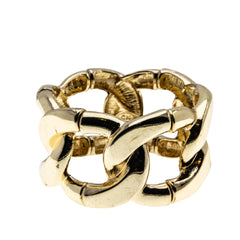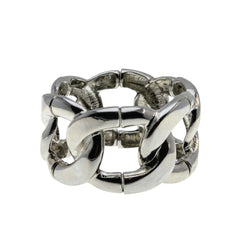Classical Greek Revival - Vintage Sterling Silver Double Ram's Head Ornate Bracelet (VB110)
Rarities Antique Jewelry
Classical Greek Revival - Vintage Sterling Silver Double Ram's Head Ornate Bracelet . This stately bracelet is crafted from sterling silver, hallmarked 925 for sterling silver, and a makers mark E.51. The bracelet features Classical Greek Revival styling, wonderful detail, and quality craftsmanship. The bracelet is very simple in design, however the ram's heads are very detailed and spectacular. Look closely at the faces of the rams, no detail was spared. Even the collars of the ram heads have a beautiful beaded design. The bangle part of the bracelet has a twisted design which is simple in design however much more beautiful than if the bracelet was left plain. The bracelet simply slips on, and securely stays in place due to the flexibility of the bracelet. This vintage bracelet would make a wonderful addition to any jewellery collection.
Comments: Beautiful, and a true conversation piece.
History: Silver was discovered after gold and copper about 4000 bce, when it was used in jewelry and as a medium of exchange. The earliest known workings of significant size were those of the pre-Hittites of Cappadocia in eastern Anatolia.
Sterling silver, a 92.5% silver and 7.5% copper alloy, has a history rooted in 12th century England, initially used for coinage and later becoming popular for jewelry and other ornamental items.
The ram has played an important role in the religion and mythology of many different cultures. It first appears as symbol in Ancient Egypt, as God Amon was depicted with a ram's head. In Celtic symbolism, it represents fertility and rebirth.
The rams horns are the symbol of the zodiac sign Aries and even the Greek name of this sign(krios=ram) indicates the correlation between the zodiac sign and the ram.
The Greek mythology, the golden fleece ram, a ram with wings helps Phixus from his father and stepmother and the sacrifice they had planned for him. It's the same ram that is the object of Jason's quest during the Argonautic expedition.
In the context of Greece, "antiquity' typically refers to Classical Antiquity, which encompasses the historical period of Ancient Greece and Rome. This period is often dated from the 8th century BC to the 5th century AD. It's also known as the Greco-Roman era or the classical period.
Classical Antiquity: This is the overarching term for the period spamnning Ancient Greece and Rome.
Classical Greece: This specifically refers to the period within Classical Antiquity that is focused on Ancient Greek civilization.
Greco-Roman : This highlights the intertwined nature of Greek and Roman culture during this era.
Hellenistic: This term is derived from the Greek word "Hellas" is used to describe things related to Ancient Greece.
The classical period in Greece, within this broader antiquity, is often further divided into :
Archaic Period (c. 800-500 BC)
Classical Period (c.500-323 BC)
Hellenistic Period (c. 323-31 BC)
Ram motifs were prevalent in Greece from the Geometric period (around 900-700 BC) through the Archaic and Classical periods, and even into Hellenistic times. They appeared on pottery, jewelry, sculpture
The ram's head is depicted in ancient jewels, mainly bracelet and other pieces.
Measurements: 7" Will fit up too a 7" wrist or smaller.
Weight: 27.6 grams
Condition: Excellent
Origin: Greece Provenance: England
Date: Circa 1960













